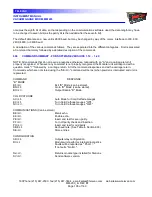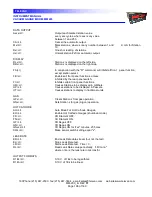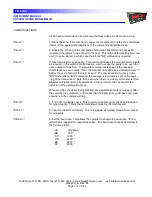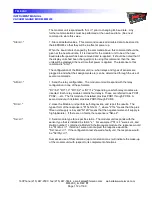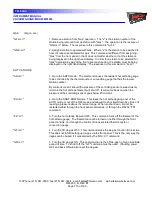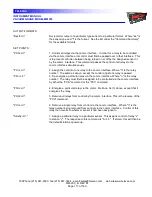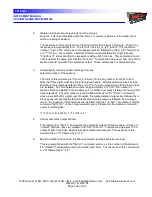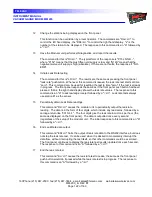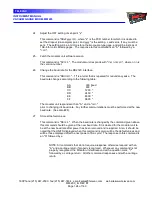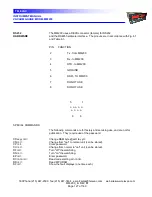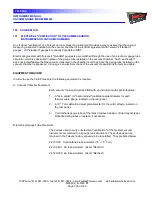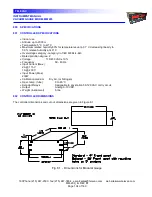
INSTRUMENT MANUAL
VACUUM GAUGE MODEL MM200
160Phone:(215) 947-2500 fax:(215) 947-7464 e-mail:[email protected] web site:www.televac.com
MM-200_im REV M
Page 119 of 160
TELEVAC
607
COMMUNICATIONS - FOR SOFTWARE VERSIONS 1.0 - 1.19
RS232 PROTOCOL
The Televac Modular Vacuum Gage accepts various sensor and relay modules. Upon
power-up, the processor determines the actual configuration of the Modular unit by way of electrical tests. Note
that in the following discussion where quotation marks are used, they are not a part of either the command nor of
the response. Also, the symbol "<cr>" refers to the sending of a carriage return, either in the command, or in the
response. All characters received by the modular unit are echoed back to the terminal or computer.
The communication protocol requires eight bits of data, no parity bit and one stop bit. The default data rate on a
new unit is 1200 baud, but may be changed by way of the RS232C interface to 300, 600, 2400, or 9600 baud.
By way of RS232C interface, a remote operator is capable of performing the following functions.
1.
Determine the configuration of the Modular unit (i.e.
what relays and types of sensors are plugged in and what their assignments are). This can
be done through the use of several commands.
A. Command "AR<cr>" will respond with the relay
configuration in one of the formats:
"RY=0,0" "RY=1,0" "RY=0,2" or "RY=1,2" corresponding to whether
"no relays", "relay module one", "relay module two" or "both relay
modules" are inserted. Each relay module ( 2 maximum) contains four
relays. There are referred to as PCR1, PCR2,...etc. The first module, if
installed, provides
PCR1 through PCR4. A second module, if installed, provides PCR5
through PCR8.
B. Command "Sx<cr>" responds with the processor
type that is installed in station "x".
For example if "Sl<cr>" were sent, and station no. 1 contained a Model
2A thermocouple module, the response would be "S1=2A". If station 2
were not occupied, the response would be "S2=none". If the
configuration test showed a faulty unit, the response would be "S2=flty".
Successive use of this command (up to ten station max.) will indicate
the make-up of the modular unit with respect to it's complement of
stations.
C. The assignment and settings of the various set-
points can be determined using commands described later.

